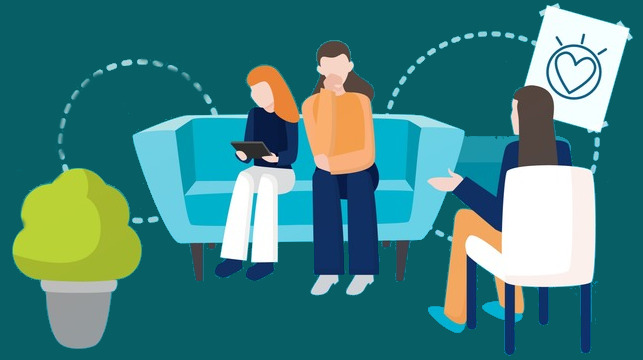We know how valuable technology is to improving and enhancing your mental health, as well as in treating many mental illnesses and conditions. We also understand that technology can be harmful when misused or overused. That’s why we are here for you.
We live in a digital world with multiple devices: our laptops and desktops, phones, and tablets. The accessibility of technology makes it possible to connect with people on the other side of the globe at any time, but these devices can also get a person lost in them and miss out on the human interactions around them.
The Laptops, iPhones and smart devices are part of our everyday lives and have changed the way we communicate for better or for worse. While technology has opened up links for individuals to readily access information, help, and support, there are significant risks associated with its increased usage. With technology becoming more prevalent in children’s lives, it’s important to decide what age kids should get a phone as there can be lasting effects of phone usage at an early age. Specifically, screen time and social media use among kids and teens have been linked with an increased prevalence of mental health concerns. The effects of technology on children and teens can have an impact on social skills, their development and can be linked to a number of other subsequent factors. Research has indicated that internet addiction, particularly among younger demographics such as teenagers, is becoming a widespread issue. It has been linked to depression, low self-esteem, and loneliness – symptoms that often lead to diagnosable mental illnesses and worsening issues that were already present.
The use of social media sites, such as Facebook and Instagram, is associated with increased levels of depression, according to a recent study. Specifically, the study found that passive use of social media sites (such as scrolling for hours or days on end) was linked to higher levels of depression in young adults. The overall relationship between screen use and both physical and mental health outcomes suggests that there has been a strong association between high levels of technology use in children and adolescents with reduced physical activity, increased risk for depression, poorer sleep quality and lower well-being.
Technology’s Impact
Technology use has been linked to both positive and negative effects on mental health. For example, people who are online more are exposed to more negative aspects of life like cyber-bullying and trolling but technology users also have access to positive communities for support. A positive impact on happiness is using technology for employment prospects and managing anxiety through healthy forms of social media or even apps that help manage the symptoms of specific health conditions. Kids use technology for engaging in music and self-expression but also at risk of being victims of internet predators. A negative impact can be increased risk of obesity due to more sedentary lifestyles. Adults who work from home may increase productivity but they also run additional risks like being socially isolated. Use technology wisely and keep in mind that there is a personal cost to every advantage gained as we adapt to our new environments in the modern world we live in today.
The Online-Offline Balance
Technology offers us many advantages, both in work and play. But there is a growing concern that our society is becoming over-dependent on technology. As we increasingly rely on online connections and technology to do everything from shopping to communicating with friends, it’s natural that we find ourselves with less time for face-to-face interactions. Whether you appreciate the benefits of new technology or want to ensure it doesn’t negatively impact your daily life, there are some practical steps you can take to maintain a good balance between online and offline interactions.
The online and offline lives are not separate – they are complementary. Here are tips for balancing technology with mental health:
For Parents
Be a role model: Introducing your family to technology can be fun and educational. At the same time, it’s important to set a good example for children by using technology responsibly. Talking with your children about technology can help you use it more responsibly and set good limits, for them and for you.
Reward good habits early on: Help your child achieve a healthy relationship with technology. Becoming familiar with parental controls and time limits is the first step towards online success. Understand your child’s online habits. While there may be some online habits that are safe and appropriate, your child’s particular habits might expose them to inappropriate material or situations (for example, excessive gaming). Encourage healthy interaction skills and give your child the opportunity to participate in sports, creative hobbies and other offline activities.
Make media use a group activity: Bring together a group of friends and family to watch, play, or engage in media together. Doing so may encourage the use of safe technology practices and reduce the time you spend on your devices alone.
For Young Adults and Adults
Set tech-free times: Turning off the phone, silencing or engaging airplane mode helps reduce, distracting, and frustrating cues from the phone. This helps to prevent the constant checker syndrome-a compulsion to always engage technology for fear of missing out on something. When this is done only during work hours, it also allows for calls or texts relevant to work. If a parent is working from home, focusing on family matters as much as possible during these times as well can be helpful for everyone.
Use apps to help: There are some tried and true strategies that can help when dealing with tech addiction. One of them is to find technology-free times by identifying the most time-consuming applications on your phone, and then downloading an app to help. Technology overuse is a serious matter. The spread of free apps, games, and internet browsing can have detrimental effects on the mental health of young children and adults. In order to find solutions, it’s important to understand what can cause overuse and the effects it has on everyday life.








